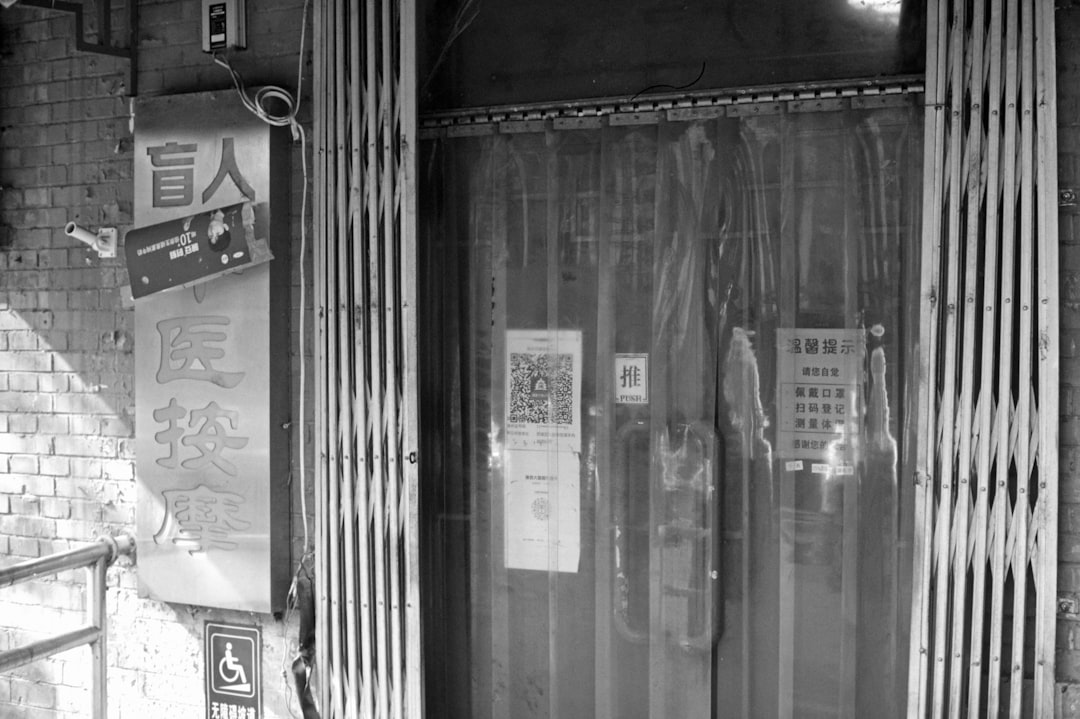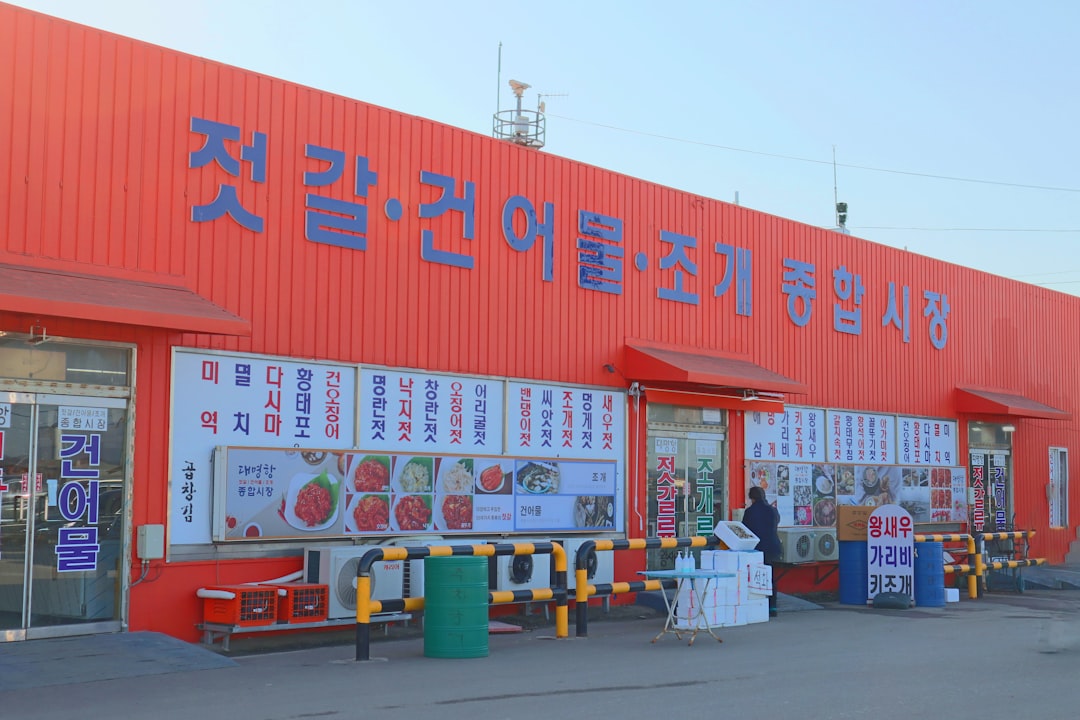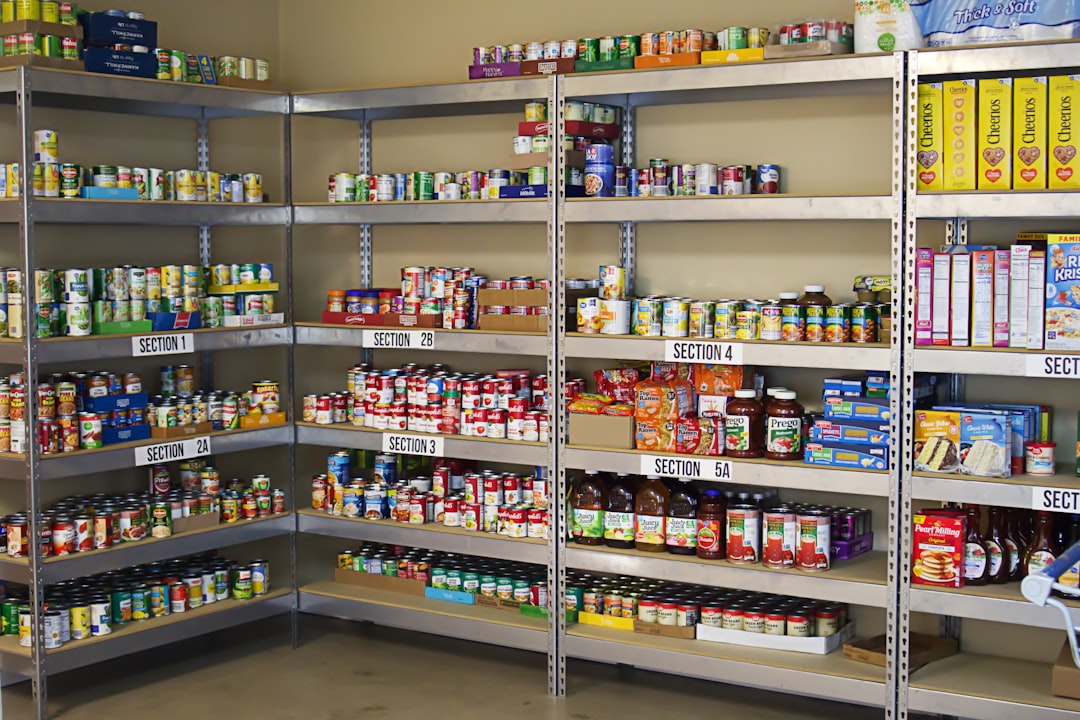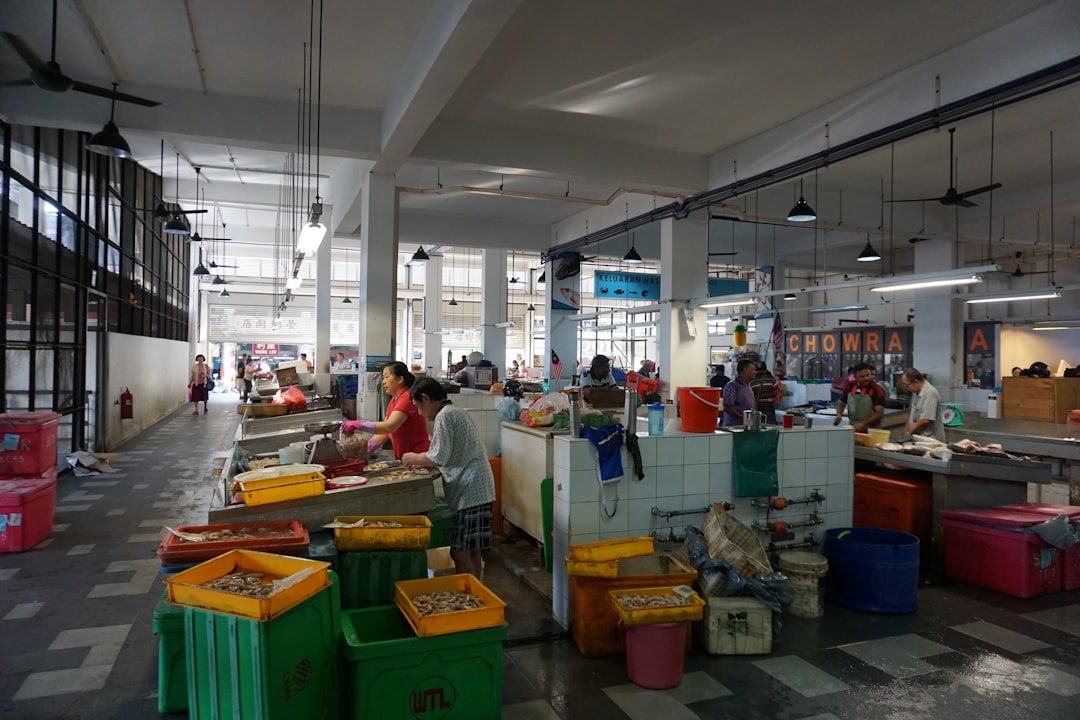

Engage prospects with a scan and streamline customer engagement with FREE QR code marketing tools by Sona – no strings attached!
Create a Free QR CodeFree consultation

No commitment

Engage prospects with a scan and streamline customer engagement with FREE QR code marketing tools by Sona – no strings attached!
Create a Free QR CodeFree consultation

No commitment
QR codes have evolved from a novelty to a strategic powerhouse for medical supply stores aiming to bridge offline engagement with online action. For retailers and distributors, QR codes represent a simple, scalable, and effective way to collect customer feedback, streamline inventory processes, and enhance patient education without requiring an app download or complicated onboarding. Yet for many operators, paper surveys, feedback slips, and generic forms too often lead to lost, incomplete, or slow data, leaving staff unaware of high-value prospects and missed opportunities for follow-up.
Forward-thinking medical supply stores recognize the need to surface engagement signals quickly rather than relying on outdated or siloed systems that can leave potential leads anonymous and upsell chances untapped. By digitizing feedback collection and tying engagement directly to customer records, managers gain near real-time data to optimize everything from service recovery to product selection. As patient experience and operational efficiency become key differentiators, healthcare marketing research%20(1)%20(1).pdf) shows QR usage improving engagement. QR technology has emerged as an essential tool for identifying high-fit customers, targeting communications more effectively, and future-proofing feedback loops against regulatory and security challenges. See Sona QR’s healthcare guide.
This article explores how QR codes can be used strategically to gather actionable feedback in medical supply stores, highlighting the steps, benefits, and best practices to create a secure, data-driven feedback loop that fuels growth, compliance, and more tailored outreach.

Medical supply stores often struggle with incomplete or outdated account data that results from manual workflows such as clipboards at checkout, paper comment cards, and static email requests. These analog methods suppress response rates and make attribution nearly impossible. QR codes in marketing bridge the gap between physical touchpoints and digital outcomes, making it easy to capture high-quality feedback and assign it to the right account in real time.
By placing QR codes on counter displays, receipts, packaging, and invoices, you can direct customers to mobile-first forms like Google Forms that are fast to complete and easy to track. A streamlined, QR-enabled experience reduces friction, strengthens follow-through, and helps staff identify issues and opportunities quickly. The result is a virtuous cycle where every scan generates structured data that feeds your CRM, supports targeted outreach, and improves the customer experience.
Legacy workflows introduce delays and produce incomplete information. A QR-led approach strengthens compliance and data integrity while giving managers near real-time visibility into customer needs. When scan data feeds directly into customer profiles, you can build richer segments for retargeting, deliver timely service recovery, and make better product and inventory decisions.

Medical supply stores interact with a wide range of audiences such as patients, caregivers, clinicians, and procurement teams. Many of these interactions occur offline, which makes it hard to capture interest and convert it into measurable action. QR codes solve that challenge by turning every physical surface into a digital entry point that is trackable, secure, and easy to update.
They also address a critical need in healthcare retail: speed with accuracy. Customers want product instructions, recall notices, or support options without downloading an app or waiting on hold, as part of modern marketing. QR codes deliver an immediate path that respects time and improves documentation. When paired with dynamic destinations, they also reduce the risk of outdated information in a regulated environment where accuracy is essential.
By closing the loop between storefronts and digital platforms, medical supply retailers see who their engaged customers are, which products or services attract the most attention, and where potential friction exists in the journey. That clarity supports smarter staffing, merchandising, and follow-up.

Different QR code formats support different goals. In medical supply retail, the most useful formats are those that collect feedback, simplify support, and connect customers to accurate information quickly. Choosing the right format ensures the action you want is only a scan away.
Dynamic QR codes are often best for medical environments because they allow destination updates without reprinting. If a product instruction changes or a survey needs to be shortened, the QR remains the same, and the content can be updated centrally. This flexibility keeps information current, helps maintain compliance, and improves the customer experience.
With a centralized platform such as Sona QR, you can create and manage these formats, switch destinations as needed, and consolidate analytics in one dashboard.

Store layout and physical touchpoints determine how much feedback you capture. High-traffic zones, dwell-time areas, and post-purchase moments are prime opportunities to invite quick feedback or provide resources that reduce support tickets. The goal is to match intent and context: place a relevant prompt in a place where customers have both need and time to act.
Optimizing scannability is just as important as placement. Codes should be large enough, high contrast, and positioned at eye level when possible. Always include a clear benefit-driven call to action and a brief description of what happens after the scan. Testing different placements over several days will reveal which surfaces generate the most engagement.
By aligning QR distribution with the natural flow of customers and staff, medical supply stores can maximize response rates and reduce the chance that important signals are lost between interactions.

QR codes should be deployed where they address a clear customer need and produce measurable outcomes. In medical supply stores, common use cases focus on product satisfaction, safety, and education. Each use case can be tied to a specific KPI such as response rate, time to resolution, or reorder frequency.
The most effective programs connect these use cases to downstream actions. For example, a negative product satisfaction response should trigger an immediate service workflow, while a completed education module can unlock a discount on related accessories. This ensures that feedback is not only collected but also converted into meaningful next steps.
Every QR scan carries context such as location, time, and intent. By deploying unique codes across touchpoints, you can automatically segment audiences and use those segments for targeted follow-up. Granular audience building turns anonymous foot traffic into known, engaged contacts with specific needs. For campaign activation, use Sona’s retargeting playbook.
In medical supply retail, meaningful distinctions include patient versus caregiver, first-time buyer versus replenishment, and consumer walk-in versus clinic procurement. Mapping these distinctions to QR destinations and tags allows precise messaging that respects the user’s goals while driving better business outcomes.
With aggregated scan data, medical supply stores can spot cross-sell opportunities such as accessories for CPAP machines, intervene early when negative intent appears, and allocate sales resources to the highest-value accounts.
QR codes unify offline and online efforts by making every channel trackable and interactive. When QR-enabled initiatives are centralized, marketing teams can compare performance across media, improve message consistency, and eliminate wasted spend on low-intent tactics. This is especially important in medical retail, where messaging must be accurate, timely, and compliant.
Start with your most visible and frequent touchpoints. Then extend QR functionality to events, digital signage, and direct mail. Keep content consistent across channels, and use dynamic QR destinations to align the experience with the scanner’s context and device.
Centralizing scan and feedback data gives you a single source of truth about what resonates with your audience. With Sona QR or similar platforms, you can manage codes across channels, monitor performance, and sync insights to your CRM and analytics tools.
A structured rollout prevents gaps and accelerates learning. The steps below will help you plan, launch, and refine a QR-enabled program that collects reliable feedback and turns it into action. Start with a focused use case, then scale to additional products, locations, and channels as you validate results.
Treat this checklist as an iterative loop. Each step informs the next, and the insights you capture should lead to continuous improvement. Assign clear owners for design, deployment, and analysis so nothing falls through the cracks.
Begin by selecting a business problem that matters. Post-purchase satisfaction for high-volume items, product setup support for complex devices, or restock reminders for consumables are strong options. Set a clear objective and identify the audience and context in which scanning occurs.
Example: Post-purchase satisfaction on wound care products with a goal to reach 40 percent of buyers within 72 hours. Success is defined as a 20 percent lift in feedback submissions and a 15 percent reduction in negative reviews within 60 days.
Choose dynamic QR codes when you need editability, A/B testing, campaign tagging, and performance tracking. Use static QR codes for unchanging destinations like a PDF. In regulated environments, dynamic codes help keep information current without reprinting.
For feedback collection, dynamic is usually the best choice. You can shorten the form, rotate incentives, or route negative responses to live chat, all without touching the printed code. Tools such as Sona QR make these updates easy to manage.
Design for visibility and clarity. Add a visual frame, brand colors, and a concise call to action near the code. Use a short benefit-focused line like Scan to share your experience and get 10 percent off your next purchase. Ensure the destination is mobile optimized and loads quickly.
Test scannability in real-world conditions. Check multiple devices, angles, and lighting. Validate that the survey works on common screen sizes, and confirm that analytics parameters are captured correctly for reporting and retargeting.
Start with high-visibility placements such as receipts, packaging, and waiting areas. Expand to in-store signage, appointment cards, and direct mailers once your first placements show reliable results. Match the content to the context so the action feels natural.
For example, put a Scan to rate your fitting experience code near braces and compression wear fitting areas. On packaging for respiratory devices, use Scan for quick-start video and submit feedback in 30 seconds to reduce support calls.
Monitor scan volume, completion rates, time to complete, and sentiment. Use geotagged or location-specific codes to compare stores and identify best practices. A/B test CTA language, incentives, and form length to find the optimal balance of quantity and quality.
Create weekly dashboards that surface outliers and trends. If a store’s response rate drops, investigate placement or staff promotion. If negative sentiment spikes on a product, escalate to product support and adjust in-store messaging.
A checklist-driven approach eliminates guesswork and shortens the time to value. By treating each scan as a signal and closing the loop on next steps, you will transform feedback from a passive metric into an active growth lever.
Counting scans is a start, but impact comes from connecting scans to outcomes. Medical supply marketers need to know which codes drive completed surveys, support requests, or orders, and how those actions affect retention, average order value, and review scores. This requires a clear analytics plan and tools that tie real-world engagement to your systems of record.
Integrating QR analytics with your CRM or order systems lets you enrich customer profiles with behavior data. Over time, you will see patterns such as which product lines produce the most feedback, which placements improve NPS, and which incentives drive the best ROI. These insights guide spending and help you scale what works.
Platforms like Sona QR centralize these analytics, making it easier to move from basic engagement metrics to revenue impact. Start creating QR codes for free. That clarity helps leaders justify investment and refine the overall customer journey.
Successful QR programs combine thoughtful design, disciplined measurement, and operational follow-through. Because medical retail spans sensitive products and regulated information, privacy and accuracy must be part of the plan from day one. When customers trust the process and find it easy, participation rises and data quality improves.
Staff enablement is another key factor. Frontline associates who can confidently explain why scanning helps the customer will drive higher engagement. Provide scripts, signage, and incentives so staff see the benefit and make scanning part of the routine.
Incorporating QR into loyalty programs and restock reminders adds ongoing value while steadily improving account data quality. Over time, this creates a feedback engine that supports growth and customer trust.
Examples from the field show how small shifts in placement and process can deliver outsized results. The most effective programs focus on a single use case, validate it with clear metrics, and then scale across products and locations. Each success creates internal momentum and a playbook that others can follow.
Security and privacy considerations often determine adoption in healthcare retail. Using encrypted, uniquely addressable codes and reputable platforms reassures customers and simplifies audits. Many stores find that once privacy is addressed clearly in signage and forms, participation increases significantly.
These stories make the case that QR programs deliver tangible improvements in both customer experience and operational efficiency when executed with care.
Even strong QR campaigns can stumble on simple issues like poor scannability or outdated links. Getting the fundamentals right keeps customers engaged and prevents data loss. Small details such as contrast, size, and lighting can make or break scan rates.
Avoid one-size-fits-all approaches. A code that works on a receipt may not work on frosted packaging or a glossy sign. Always test in the environment where the code will live, and adjust the design or placement as needed.
By avoiding these pitfalls and reinforcing best practices, you will keep your QR program reliable, compliant, and effective at generating insights that drive action.
For medical supply stores, QR codes are more than a shortcut. They are a strategic advantage that turns every package, receipt, and display into a moment of measurable engagement. When anonymous interactions are replaced by timely, attributed feedback, stores can resolve issues faster, personalize outreach, and identify high-fit customers with confidence.
By deploying secure, dynamic QR codes across the customer journey and centralizing analytics, medical supply businesses build a durable feedback loop that powers smarter decisions. The outcome is stronger compliance, higher customer satisfaction, and consistent growth driven by real-world signals rather than guesswork.
QR codes have revolutionized medical supply stores by turning traditional feedback collection into a seamless, real-time engagement tool. By enabling instant, mobile-friendly access to surveys and reviews, QR codes help stores capture invaluable customer insights that drive better inventory decisions, improve service quality, and enhance overall customer satisfaction. Imagine having direct feedback from healthcare professionals and patients at your fingertips, allowing you to tailor your offerings and boost loyalty like never before.
With Sona QR, you gain the power to create dynamic, trackable QR codes in seconds—no need for reprinting as campaigns evolve. Every scan delivers actionable data, connecting customer feedback directly to business outcomes and helping you optimize both customer experience and operational efficiency. Start for free with Sona QR today and transform every scan into a meaningful conversation that propels your medical supply store forward.
QR codes provide immediate access to product instructions, recall notices, and support options without app downloads, reducing wait times and improving documentation for patients.
QR codes link patients to videos, step-by-step guides, and recall alerts, enhancing adherence, reducing misuse returns, and offering real-time insights into educational resource engagement.
By placing secure QR codes on high-risk products, customers can instantly verify authenticity, which improves patient safety and reduces fraud exposure.
Use cases include collecting product satisfaction feedback, verifying product authenticity, providing patient education resources, enabling restock requests, and simplifying support inquiries.
Stores can place QR codes on receipts, packaging, signage, and appointment cards to direct customers to mobile-optimized surveys that capture real-time, structured feedback linked to customer records.
Use Sona QR's trackable codes to improve customer acquisition and engagement today.
Create Your FREE Trackable QR Code in SecondsJoin results-focused teams combining Sona Platform automation with advanced Google Ads strategies to scale lead generation

Connect your existing CRM

Free Account Enrichment

No setup fees
No commitment required

Free consultation

Get a custom Google Ads roadmap for your business






Launch campaigns that generate qualified leads in 30 days or less.
